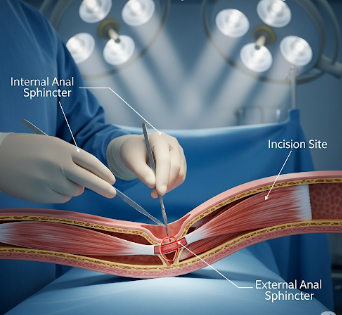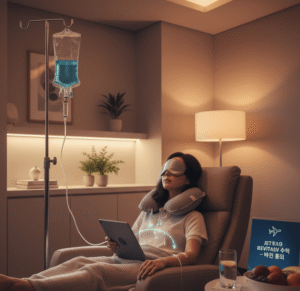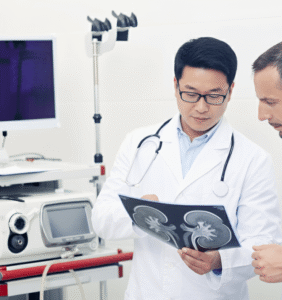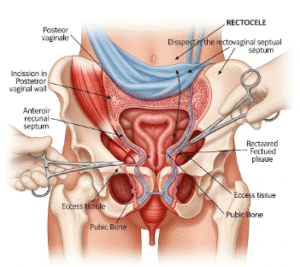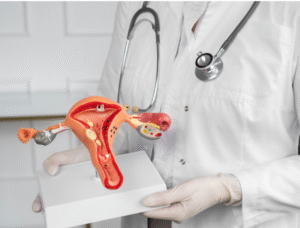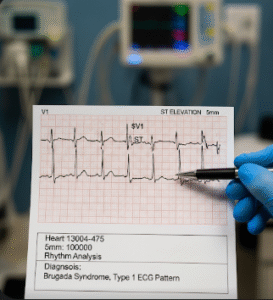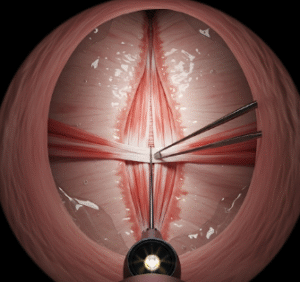Overview
Lateral Internal Sphincterotomy (LIS) is a surgical procedure used to treat chronic anal fissures, a painful tear in the lining of the anus that often does not heal with conservative treatments. By partially cutting the internal anal sphincter muscle, the procedure reduces resting anal pressure, improves blood flow, and promotes healing.
In Korea, this procedure is performed by experienced colorectal surgeons using precise surgical techniques, resulting in high success rates, minimal complications, and rapid recovery.
Highlights:
- ✅ Effective for chronic anal fissures resistant to medication
- ✅ Minimally invasive with low complication risk
- ✅ Promotes rapid healing and pain relief
What is Lateral Internal Sphincterotomy?
Lateral Internal Sphincterotomy involves making a small incision in the internal anal sphincter muscle. This reduces anal canal pressure, allowing the fissure to heal and relieving the pain associated with chronic anal fissures.
Indications include:
- Chronic anal fissures lasting longer than 6–8 weeks
- Persistent pain during or after bowel movements
- Fissures that fail to respond to topical treatments or lifestyle changes
Important: The procedure is highly effective, with most patients experiencing immediate relief from anal spasm and gradual healing of the fissure.
What are the benefits?
- Pain relief: Reduces chronic anal pain, especially during bowel movements
- Promotes healing: Improves blood flow and allows fissure closure
- Minimally invasive: Small incision results in quicker recovery
- Low recurrence rate: One of the most effective surgical treatments for chronic fissures
Key benefits highlighted:
- ⚡ Immediate reduction in anal spasm
- ⚡ Rapid symptom relief within days
- ⚡ High success rate with minimal complications
- ⚡ Improves quality of life by restoring normal bowel function
Procedure Details
1) How should I prepare for Lateral Internal Sphincterotomy?
- Preoperative evaluation: Physical examination and review of fissure history
- Medication adjustments: Stop blood thinners or medications as instructed
- Bowel preparation: May be advised to clear the rectum prior to surgery
- Consent and education: Discuss procedure, risks, benefits, and expected recovery
- Arrange post-surgery care: Plan for assistance with hygiene and recovery if needed
2) What happens during Lateral Internal Sphincterotomy?
- Anesthesia: Local, regional, or general anesthesia depending on patient and surgeon preference
- Incision: A small cut is made on the lateral side of the internal anal sphincter
- Muscle division: Partial incision of the sphincter to reduce resting pressure
- Fissure inspection: The fissure is checked to ensure proper decompression
- Closure: Small incision typically heals naturally; minimal suturing may be used
Duration: Usually 20–40 minutes
3) What happens after Lateral Internal Sphincterotomy?
- Recovery monitoring: Observation for bleeding and pain
- Pain management: Mild discomfort controlled with medications
- Bowel care: High-fiber diet, hydration, and stool softeners to prevent straining
- Follow-up care: Surgical site monitored to ensure proper healing
Highlights for post-operative care:
- ⚡ Expect minor bleeding or discharge for a few days
- ⚡ Avoid straining during bowel movements
- ⚡ Maintain hygiene and monitor for signs of infection
- ⚡ Attend follow-up appointments for optimal healing
Risks / Benefits
Risks:
- Minor bleeding or infection
- Temporary incontinence for flatus or stool (rare)
- Recurrence of fissure if bowel habits are not managed
- Rare injury to surrounding tissue
Benefits:
- Rapid and effective relief from chronic anal fissure pain
- Promotes natural healing of the fissure
- Minimally invasive with quick recovery
- Low recurrence and high patient satisfaction
Recovery and Outlook
- Hospital stay: Often outpatient or 1 day depending on anesthesia
- Full recovery: Usually within 2–4 weeks, with symptom improvement often noticed within days
- Long-term outlook: High success rate with proper post-operative bowel care and hygiene
- Follow-up: Regular check-ups to monitor healing and bowel habits
Tips for optimal recovery:
- ✅ Use stool softeners and maintain a high-fiber diet
- ✅ Avoid prolonged sitting and straining
- ✅ Keep the area clean and dry
- ✅ Report any severe pain, bleeding, or signs of infection immediately
When To Call the Doctor
- Persistent or heavy bleeding from the surgical site
- Severe pain not relieved by prescribed medications
- Signs of infection (redness, swelling, fever)
- Incontinence or difficulty controlling bowel movements
Best Korea Option / Process
Korea provides advanced care for Lateral Internal Sphincterotomy:
- Top hospitals: Experienced colorectal surgeons with minimally invasive techniques
- Advanced diagnostics: Physical examination and imaging if needed to guide surgery
- Surgical options: Outpatient or short-stay lateral internal sphincterotomy
- Postoperative care: Pain management, wound care, and dietary guidance
- International patient support: Online consultation, appointment scheduling, and telemedicine follow-up
Step-by-step process in Korea:
- Online consultation and review of history and imaging
- Preoperative evaluation and bowel preparation
- Lateral Internal Sphincterotomy performed by a colorectal specialist
- Postoperative monitoring, pain control, and early mobility
- Follow-up to ensure healing and monitor bowel function

